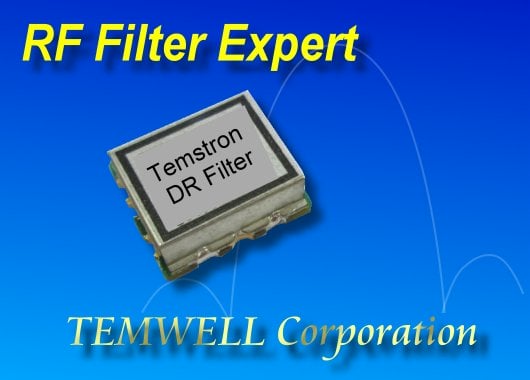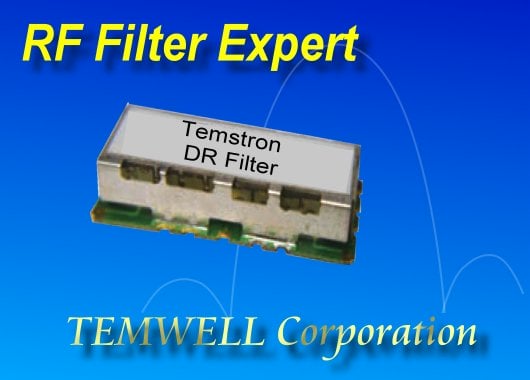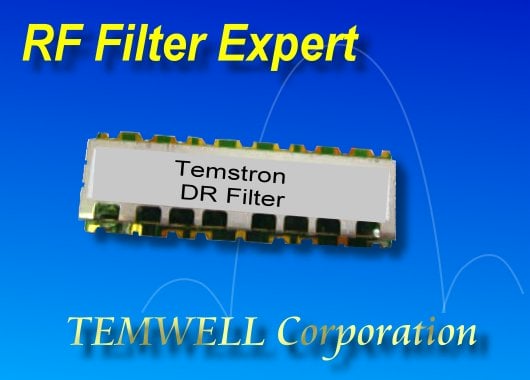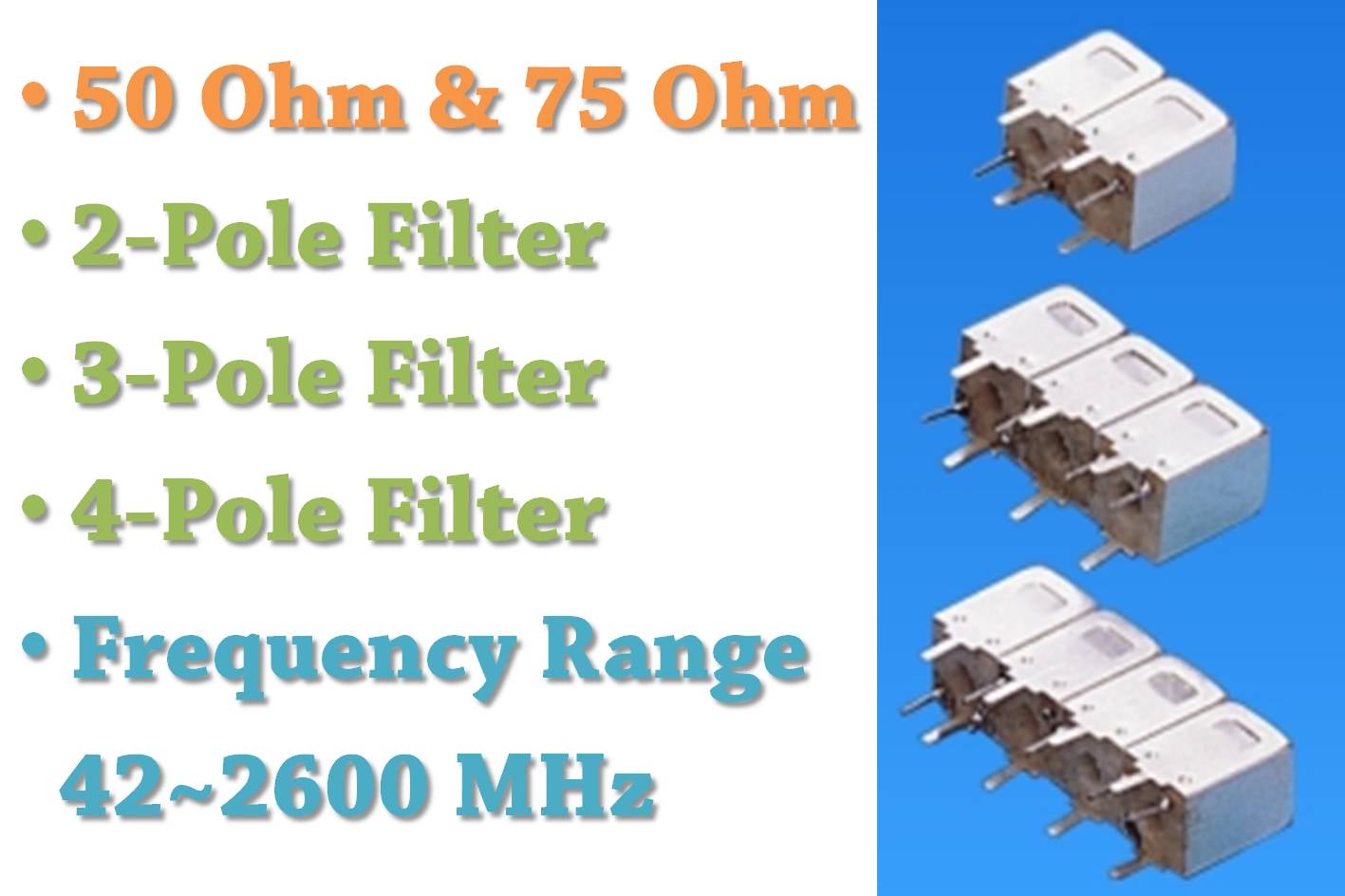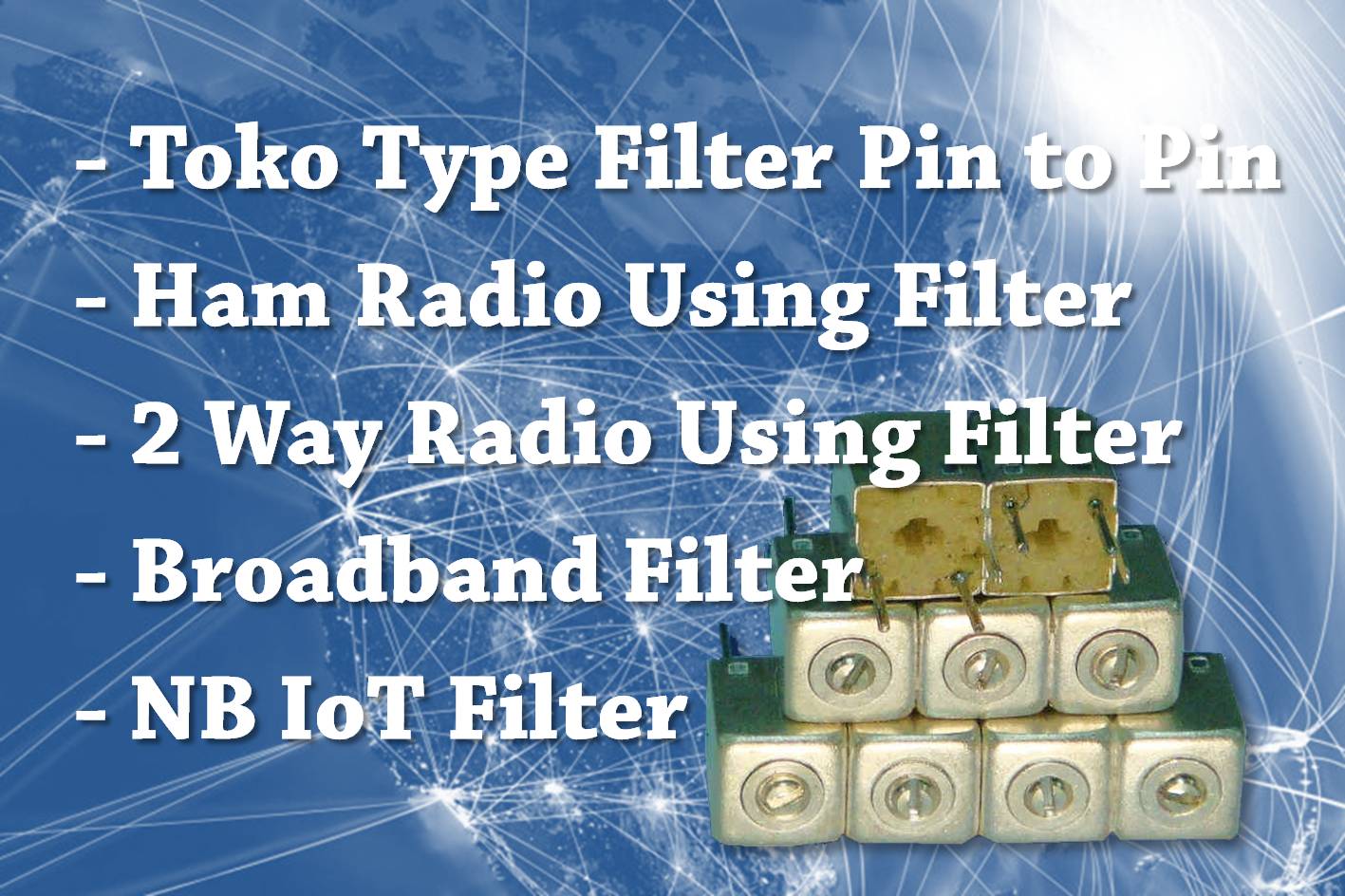5G IMT spectrum and Satellite coexist
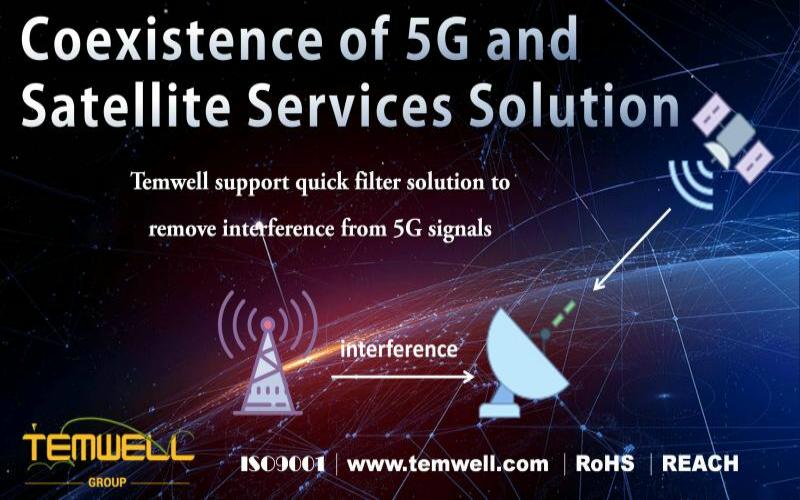
According to IMT-2020 standard the 5G mobile communication network has been considered sharing spectrum with Satellite service including ISS (Inter-Satellite Service), EESS (Earth Sxploration Satellite Service), SRS (Space Research Service), RNS (Radio Navigation Service), RAS (Radio Astronomy Service) and FSS (Earth-to-Space).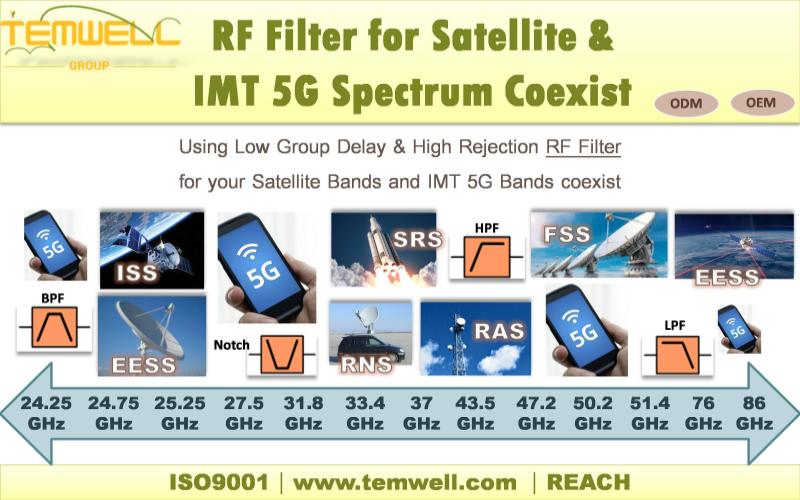
Satellite EESS: Earth Exploration Satellite Service
Working Band: 10.6G-10.68G/ 25.5G-27G/ 31.5G-31.8G/
36G-37G/ 50.2G-50.4G/ 81G-86G/
Custom Support: BPF/ LPF/ HPG/ BSF in Cavity Filter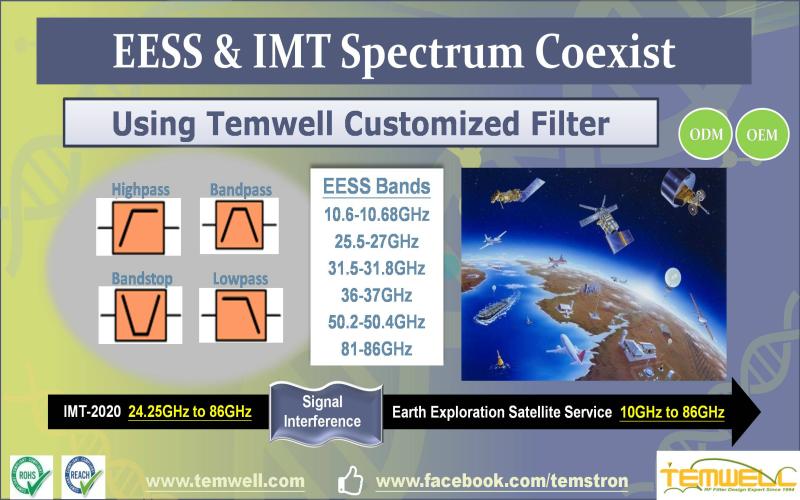
Earth exploration satellite service (EESS) is a radio system that transmits and receives radio waves through active or passive waves to observe changes in the atmosphere and conduct Earth exploration. The radio frequency bands used usually cover 10.6G-10.68G, 25.5G-27G, 31.5G-31.8G, 36G-37G, 50.2G-50.4G, and 81G-86G. This radio service is usually between multinational regions and through satellites Communication station with the ground Messages are exchanged and exchanged between each other, so there are usually not many restrictions on transmission or reception. The new-generation 5G IMT system may cover the 31.5G-31.8G and 36G-37G frequency bands used by EESS. It will be a problem of mutual influence, so it is necessary to take measures to protect the satellite signal against this range.
Satellite FSS: Fixed Satellite Service
Working Band: 37.5G-39.5G/ 39.5G-42.5G/ 47.2G-50.2G/ 50.4G-51.41G
Custom Support: BPF/ LPF/ HPG/ BSF in Cavity Filter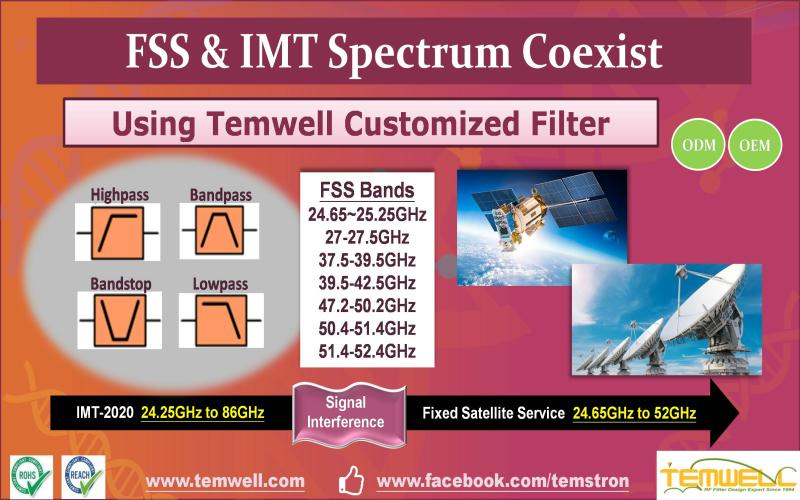
Earth-to-space (FSS) refers to the satellite network formed by Geostationary Orbit (GSO) and Non-GSO (Non-GSO) to interact with surface communication stations. The radio system for communication mainly provides low-cost and high-capacity communication services for isolated areas on the surface. Because of the Space to Earth and Earch to Space used by this satellite service Communication is mostly via LINE-OF-SIGHT radio transmission. Covered by the new generation 5G IMT system, the 37.5G-39.5G, 39.5G-42.5G, 47.2G-50.2G channels used by FSS will be affected, It must be protected in advance.
Satellite RAS: Radio Astronomy Service
Working Band: 31.3G-31.8G/ 42.5G-43.5G/
Custom Support: BPF/ LPF/ HPG/ BSF in Cavity Filter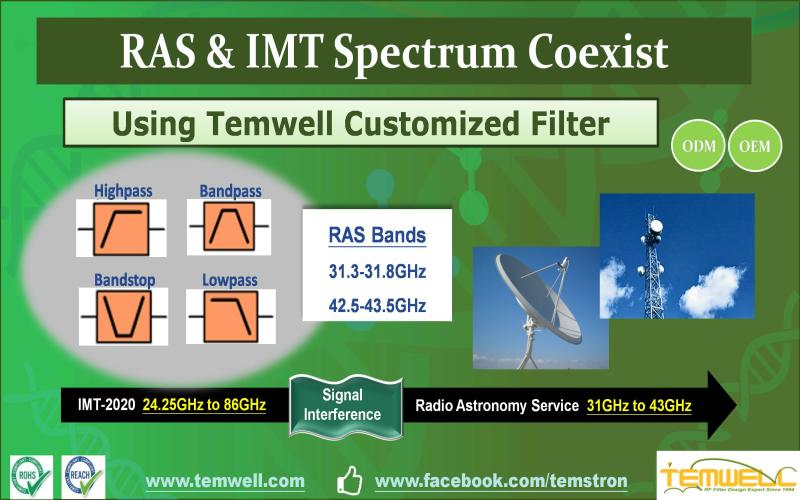
Radio Astronomy Service (RAS) is a communication system that passively receives radio waves. It is very sensitive to the interference of Adjacent Band radio waves. Therefore, from the new 5G IMT system, a strong Uuwanted Emission will be issued, which will have a considerable impact on the reception of neighboring radio astronomy systems, so it is very necessary to isolate the Uuwanted Emission issued by the 5G IMT system to protect it, including 31.3G-31.8G and 42.5G-43.5G band.
Satellite SRS: Space Research Service
Working Band: 24.25G-27.5G/ 31.8G-32.3G/ 37G-38G
Custom Support: BPF/ LPF/ HPG/ BSF in Cavity Filter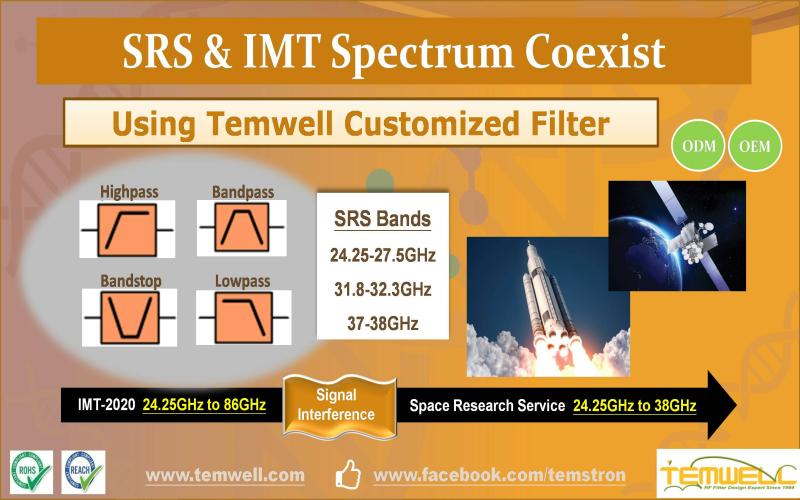
Space Research Service (SRS) is mainly used in space flight vehicles for specific scientific detection or technical testing. This service system is often given various active or passive space observation and detection tasks. The uplink and downlink communication between the space satellite and the ground communication station is also included in the use of this frequency range. The range covered by the new generation 5G IMT system may be used for SRS 24.25G-27.5G, 31.8G-32.3G, 37G-38G Frequency has an impact. It is necessary to protect these satellite signals in advance.
Satellite RNS: Radio Navigation Service
Working Band: 31.8G-33.4G/
Custom Support: BPF/ LPF/ HPG/ BSF in Cavity Filter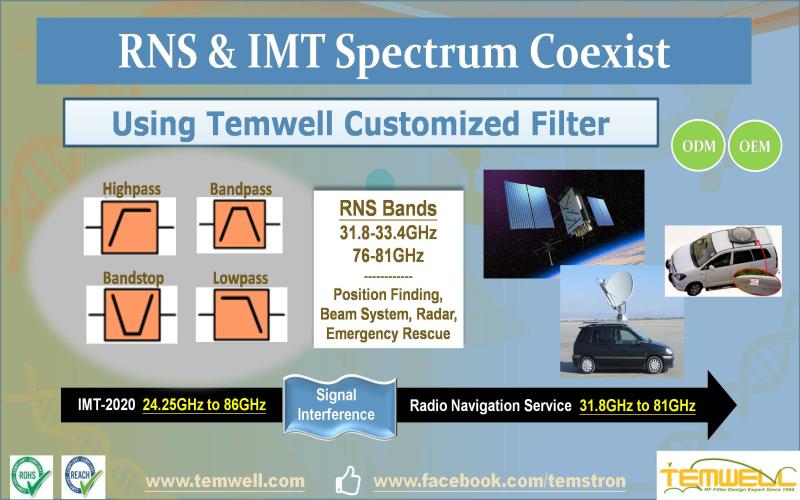
Radio Navigation Service (RNS) mainly provides navigation and positioning of flying or navigation devices, and is mostly used for emergency rescue. Therefore, the requirements for radio interference protection are very strict, and it is also common in most countries. This service system is listed as a priority radio service frequency band, including 31.8G-33.4G. Under the influence of the coverage of the new generation 5G IMT system, it is urgent to protect the normal operation of this system.
Satellite ISS: Inter-Satellite Service
Working Band: 24.25G-24.75G/ 25.25G-27.5G/
Custom Support: BPF/ LPF/ HPG/ BSF in Cavity Filter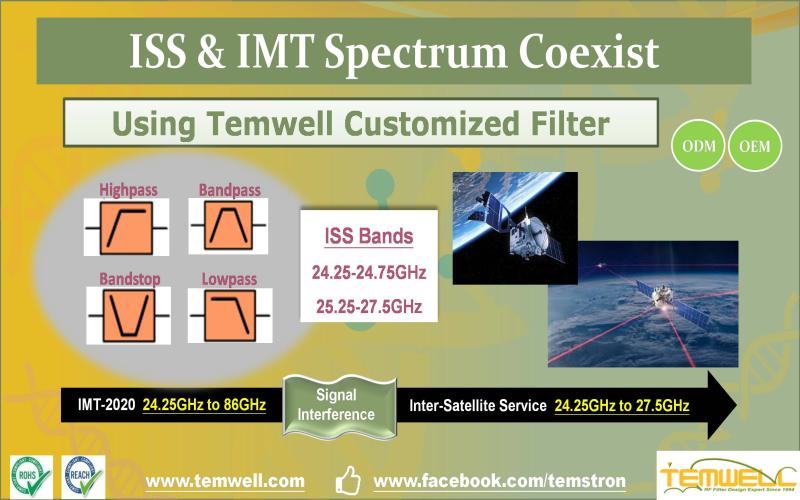
Inter-Satellite Service (ISS) refers to the transmission of radio waves that exchange information between satellites. In principle, no interference is allowed. The scope of the new generation 5G IMT system does not cover the using band of ISS, include 24.25G-24.75G and 25.25G-27.5G, but ISS often transmitted through fixed-satellite service (Earth-to-space, FSS) radio waves, so there is still interference. possibility, It is best to take precautions in advance to avoid unexpected effects.
Temwell Group as worldwide expert in RF Custom Filter supply full design proposal and RF solution for 5G application, especially in the issue of Satellite coexist with 5G IMT spectrum. Our Custom RF Filter service provides cost-effective RF Filters to help your devices and equipments to eliminate the strong interference in adjacent bands whatever 5G Mobile or Satellite bands.
If demo center frequency and bandwidth not suitable, we provide flexible frequency and bandwidth design service. We also support other design and other type filter and duplexer (e.g. Notch, Lowpass, Highpass, SMD, Cavity, Waveguide etc) for higher power and outdoor application if required, please refer to: Custom Cavity Filter , Custom SMD Filter, Custom Duplexer & Diplexer. More questions or need further information about design filter service, please Contact us
Subscribe to us on facebook for latest product news.
Facebook-Temwell/ Facebook - Temstron



